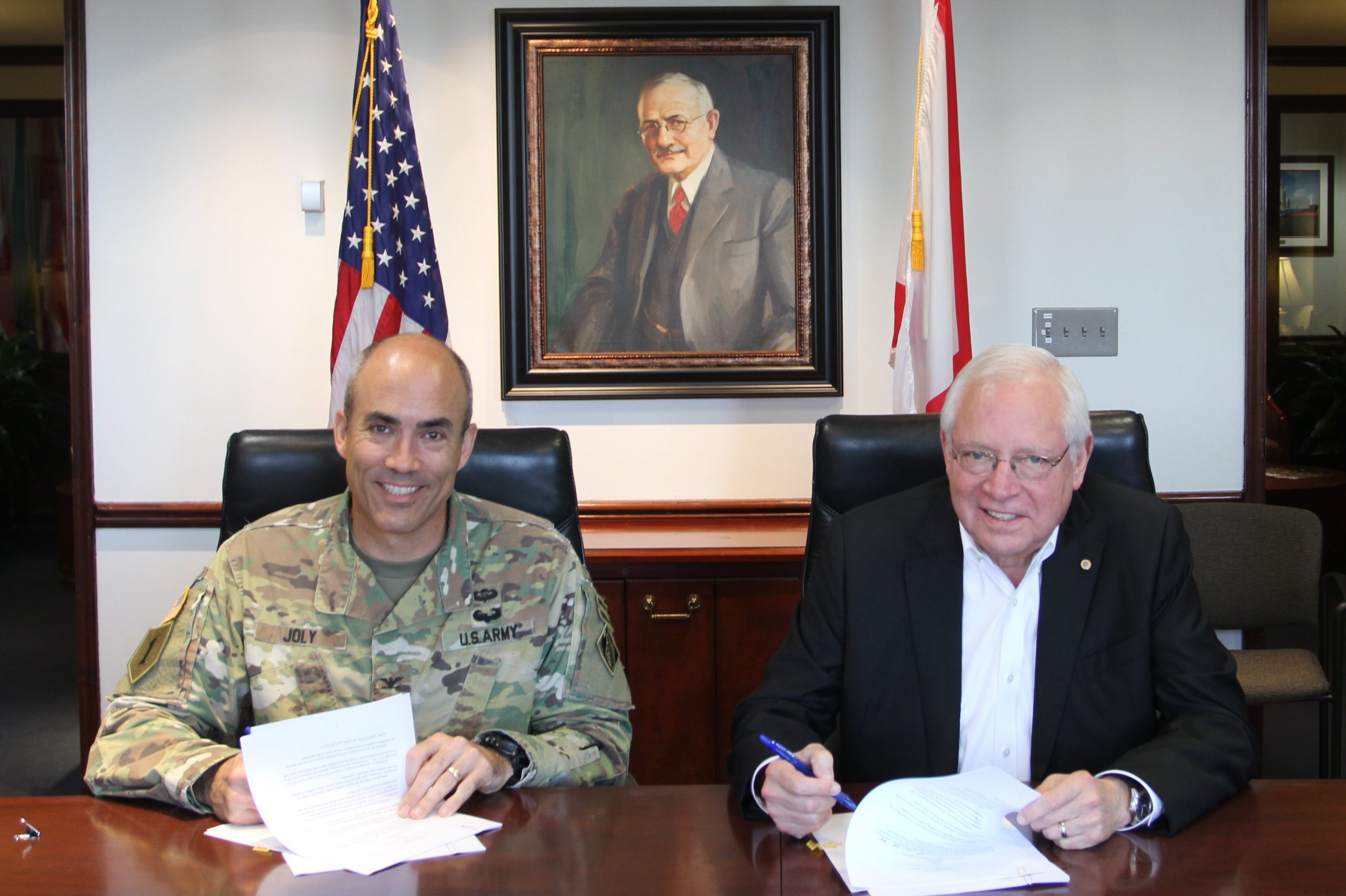In October, Alabama State Port Authority (ASPA) director and Chief Executive Officer James K. Lyons and the U.S. Army Corps of Engineers Mobile District Commander Colonel Sebastien Joly signed the Mobile Harbor Pre-Construction, Engineering and Design Agreement at the port authority’s headquarters in downtown Mobile.
On September 6, Major General Diana Holland, Commander of the South Atlantic Division, U.S. Army Corps of Engineers, signed the Record of Decision for the Mobile Harbor General Reevaluation Report (GRR) with Integrated Supplemental Environmental Impact Statement (SEIS).
The recommended plan modifications consist of the following:
- Deepen the existing bar, bay, and river channels by 5 feet to project depths of 52, 50, and 50 feet, respectively, with an additional 2 feet for advanced maintenance plus 2 feet of allowable overdepth for dredging (total depths of 56, 54, and 54 feet, respectively).
- Incorporate minor bend easings at the double bends in the bar channel approach to the bay channel.
- Widen the bay channel from 400 feet to 500 feet at a depth of 50 feet (with an additional 2 feet for advanced maintenance plus 2 feet of allowable overdepth resulting in a total depth of 54 feet) from the mouth of Mobile Bay northward for 3 nautical miles to provide a two-way traffic area for passing.
- Expand the Choctaw Pass Turning Basin 250 feet to the south at a depth of 50 feet with an additional 4 feet for advanced maintenance plus 2 feet of allowable overdepth for dredging (total depth of 56 feet) to better accommodate safe turning of the design vessel and other large vessels.
The recommended plan also includes a minimum of 1.5 million cubic yards of dredged material for suitable beneficial use projects that have been approved and permitted by the proponents through the Resources and Ecosystems Sustainability, Tourist Opportunities, and Revived Economies of the Gulf Coast States Act of 2012, (RESTORE), NOAA’s Natural Resource Damage Assessment (NRDA), or National Fish and Wildlife Foundation (NFWF) programs.
The engineering and design phase will finalize the construction parameters to deepen and widen the port. “This agreement is a critical step toward realizing the port’s ability to accommodate the larger ships serving the world’s major trade lanes, while improving vessel transit efficiencies and safety in our port,” Lyons said.
Construction on the modifications is expected to begin in late 2020.
The harbor improvement project is keeping pace with ongoing terminal investments in Alabama’s seaport to ensure economies of scale and competitive rates for the seaport’s shippers. The Port Authority will complete its $50 million, Phase 3 container terminal expansion in early 2020 delivering another 20 acres of handling yard and extending the dock to allow simultaneous berth of two Post-Panamax sized ships. The project complements prior investments totaling $450 million in marine and rail container intermodal facilities that include two Super Post-Panamax and two Post-Panamax ship to shore gantry cranes.
“As demand dictates, we’re positioned to respond quickly to further expansion,” Lyons said. Fueled by growth and Alabama shipper demand, the port authority requested that the Corps initiate the necessary studies to widen and deepen the harbor. Governor Kay Ivey (R-AL) in March of this year signed into law the Rebuild Alabama Act, a bipartisan measure passed by the Alabama State Legislature, that allocates a portion of state fuel tax proceeds to support approximately $150 million in bonds to meet the federal cost-share requirements for the harbor project.




